Hi guys! Today I’ll be performing an unboxing and review of the latest Edifier Studio series speaker and its the Edifier R2730DB (D = Digital, B = Bluetooth). Doesn’t it look similar to the R2700? Yes it does and its the successor of that speaker! It’s an upgraded version with some cool features from R2000DB that I reviewed last year. The Suggested Retail Price (SRP) is (689 MYR, 100 USD), which places it between R2700 (599 MYR, 166 USD) and R2800 (799 MYR, 222 USD).
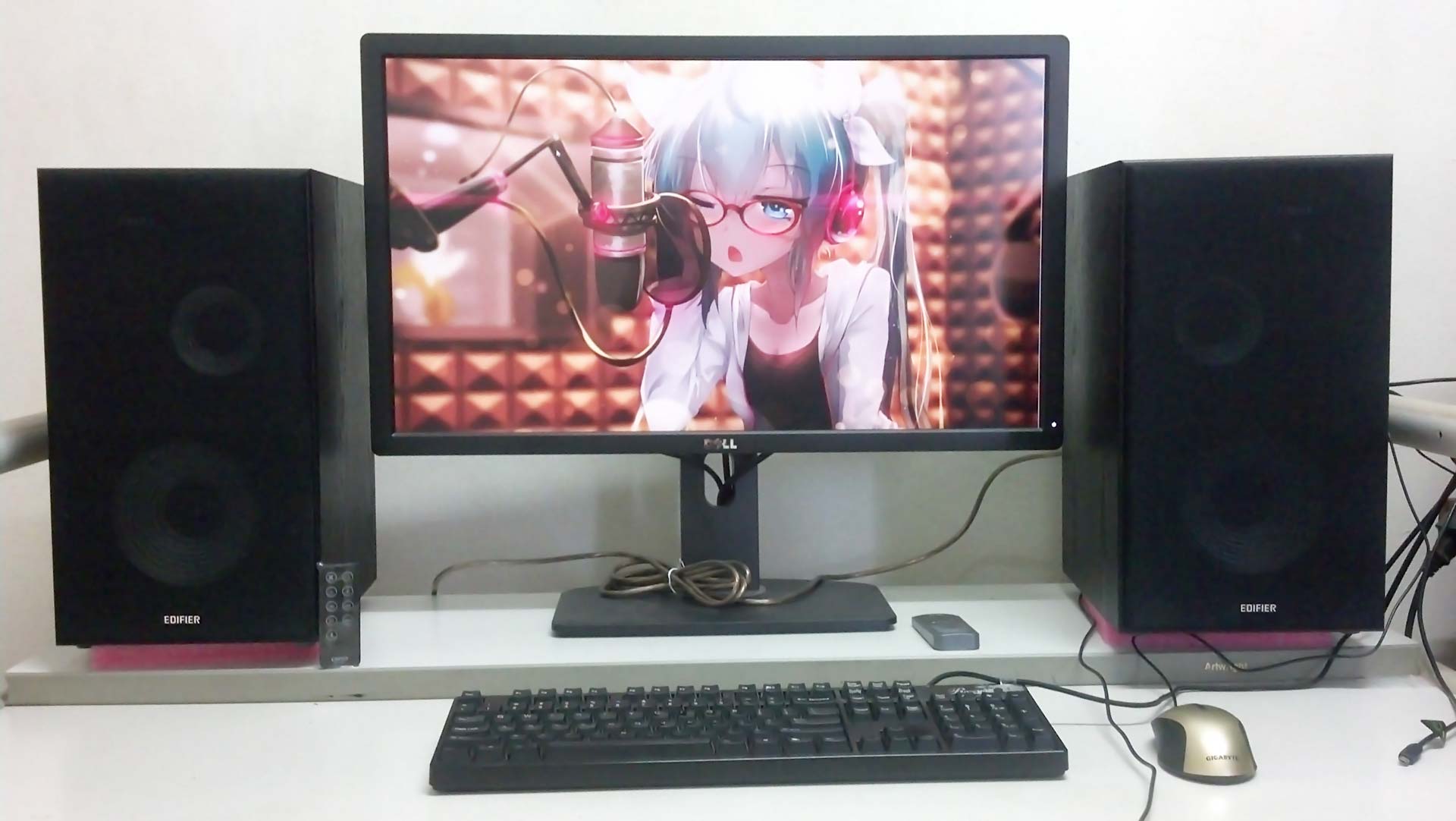
The R2730DB is a 2.0 speaker system which offers a 3-way Tri-amp audio solution. It has an abundance of connectivity which includes Bluetooth, Coaxial, Optical, RCA to allow you to connect to multiple audio sources simultaneously. Total watt output is 136 watts, more than sufficient to produce deep ground shaking bass from its 6½ inch Bass Driver, crystal clear treble from its ¾ inch tweeter, and great mids from its mid-range 4 inch driver. This great audio quality is achieved by utilizing Texas Instrument professional audio processor for sophisticated processing which includes electronic crossover, speaker compensation and dynamic range control in audio DSP.
Before diving deeper into the content, let’s take a step back and get a quick glance of the overall features that R2730DB provides and the specifications of the speaker.
Features
- Active bookshelf speaker with Bluetooth pairing capability for music playback.
- Dual Digital (optical, coaxial) and dual analogue (RCA and 3.5mm) audio inputs for versatile source connection.
- inch (178mm) bass driver, 4 inch (116mm) mid-range and ¾ inch (19mm) Neodymium tweeter drivers.
- Calibrated, front mounted bass reflect port effectively extands bass response.
- Professional 5 pin XLR canon type speaker connecting cable with angled connector.
- Class D amplifier with DSP based electronic crossover and dynamic range control minimize system distortion.
- Stand-alone bass signal output available for connection to external active subwoofer.
- Multi-functional wireless remote control and side panel control on active speaker.
- All MDF wooden enclosures to minimize acoustic resonance.
- Universal 100V-2 power supply.
Specifications
- Total power output: RMS 14Wx2 (treble) + 14Wx2 (mid-range) + 40Wx2(bass) (DRC ON)
- Signal to noise ratio: ≥85 dBA
- Frequency Response: 45Hz-20KHz(@+/-6db)
- Input sensitivity: Line in 1: 700 mV ± 50 mVLine in 2: 500 mV ± 50 mV OPT/COX: 350mFFs ± 50mFFs
- Input Type: RCA/Bluetooth/Optical/Coaxial
- Bass Unit: 6½ inch (178mm)
- Mid-Range unit: 4 inch (116mm)
- Treble unit: Φ19 mm silk dome tweeter
Edifier Related Products
Edifier Homepage
Edifier CineSound B3 Soundbar Speaker Unboxing and Review
Edifier Hi-Fi H690 On-Ear Headphone Unboxing and Review
Edifier Hi-Fi H850 Over-Ear Headphone Unboxing and Review
Edifier R1900TV Speaker Unboxing and Review
Edifier R19U Speaker Unboxing and Review
Edifier R2000DB Speaker Unboxing and Review
Edifier R2730DB Studio Speaker Unboxing and Review
Packaging
Packaging-1: Here is an overview look of the entire box. Very large indeed! 😀

Packaging-2: Starting from the front, it has a black-and-white image of the R2730DB speaker along with the remote control for a comparison in the size. However, when I did a real comparison, it should be approximately 4.5 times the height of the remote control. 🙂
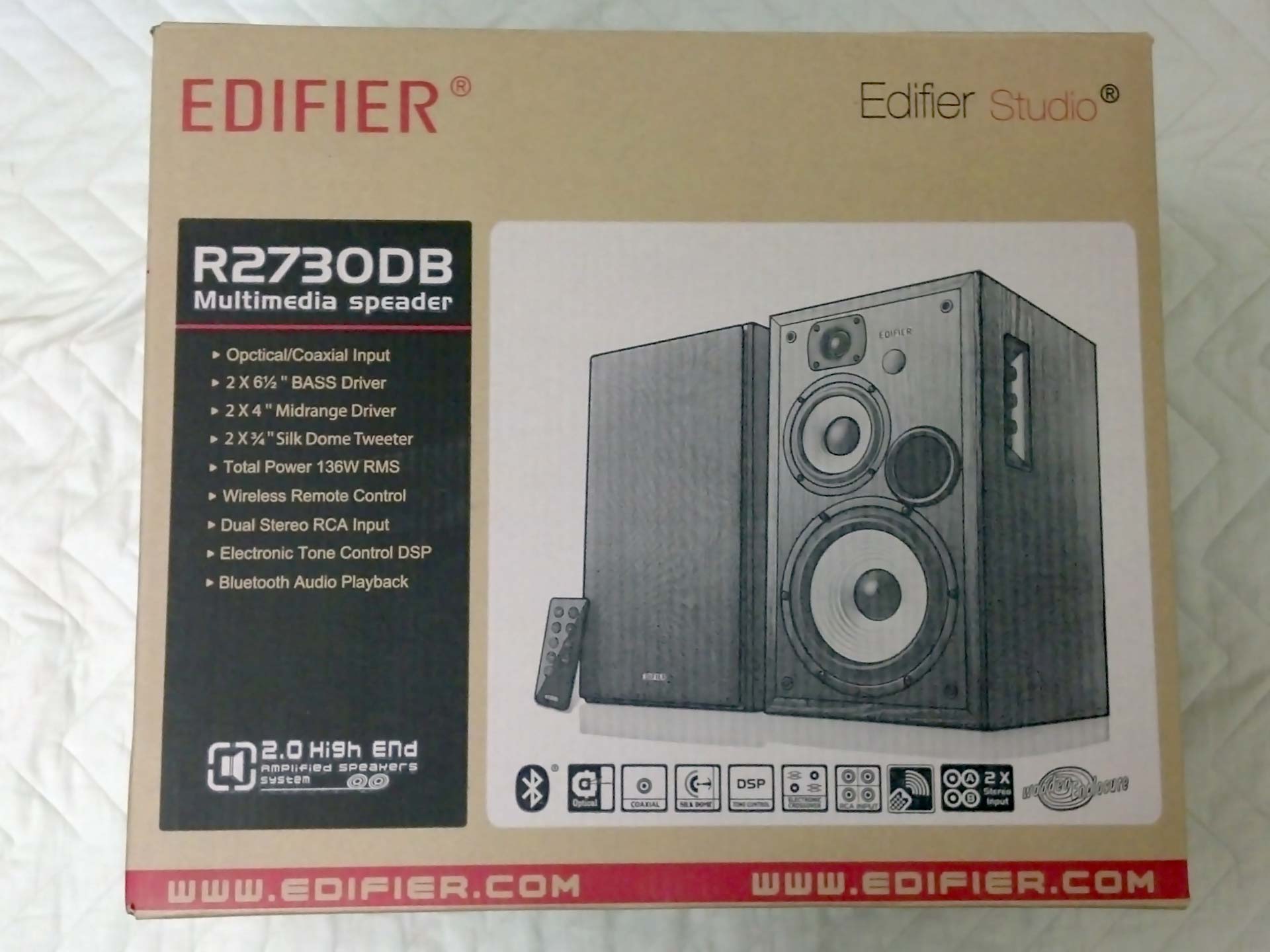
Packaging-3: The box’s left side describes the speaker specifications and and the box’s right side describes the speaker features as listed in the above introduction of this review. Both descriptions are translated into 6 languages (English, French, Spanish, Danish, Italian, Portuguese)

Unboxing
Unboxing-1: Let’s start opening up the box! The top seal is cut open with a pen knife.
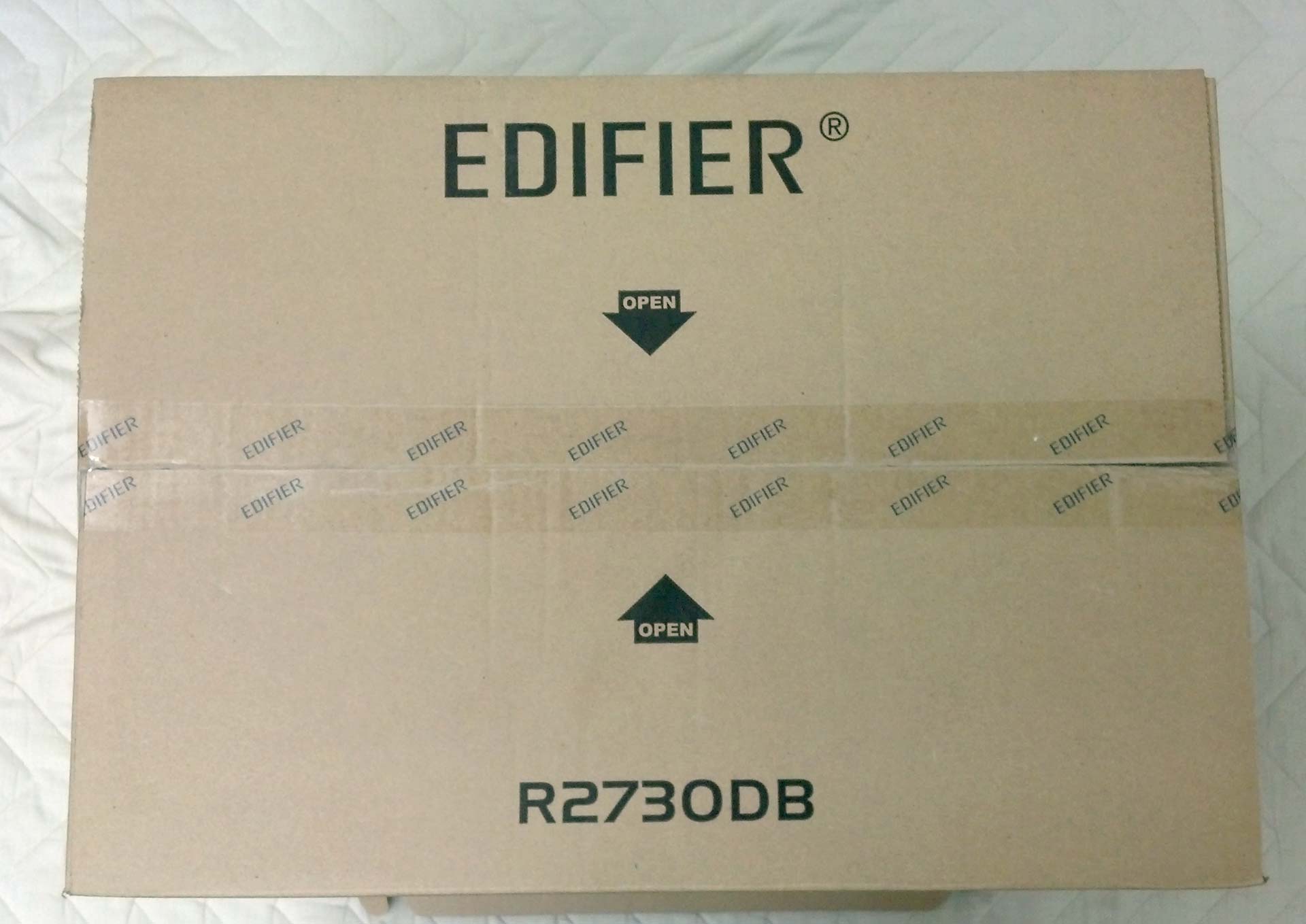
Unboxing-2: Opening up the box, I noticed there is additional information which isn’t presented on the exterior.

Unboxing-3: Taking a closer look, the left box’s flap reveals a guide on connecting your speaker, whereas the right box’s flap is a list of items contained within this box.


Unboxing-4: Upon opening the box, you will be greeted with the speaker’s accessories placed on top of the protective thick white foam.

Unboxing-5: Taking out the top foam reveal our active and passive speaker, both wrapped nicely with a plastic bag.

Unboxing-6: Both speakers are kinda heavy but the active speaker is a little more heavier as it contains the electronic components. The XLR speaker cable hardwired to the active speaker is wrapped in a separate plastic bag as shown in the image.

Unboxing-7: After extracting the core component, nothing is left except for the bottom protective foam.

Accessories
Here is an overview look of all the accessories that comes in the box. Starting from top left to bottom right: (warranty card, user manual, environment friendly note) + (power cable) + (remote control) + (optical cable) + (RCA to RCA, RCA to 3.5mm audio jack). Coaxial cable and subwoofer cable are not provided.

Accessory-1: Optical cable measures 1.4 meters in length. It has these little plastic cubs to protect the cable end points. If using optical cable (PC to Speaker), these protective plastic must be removed first!
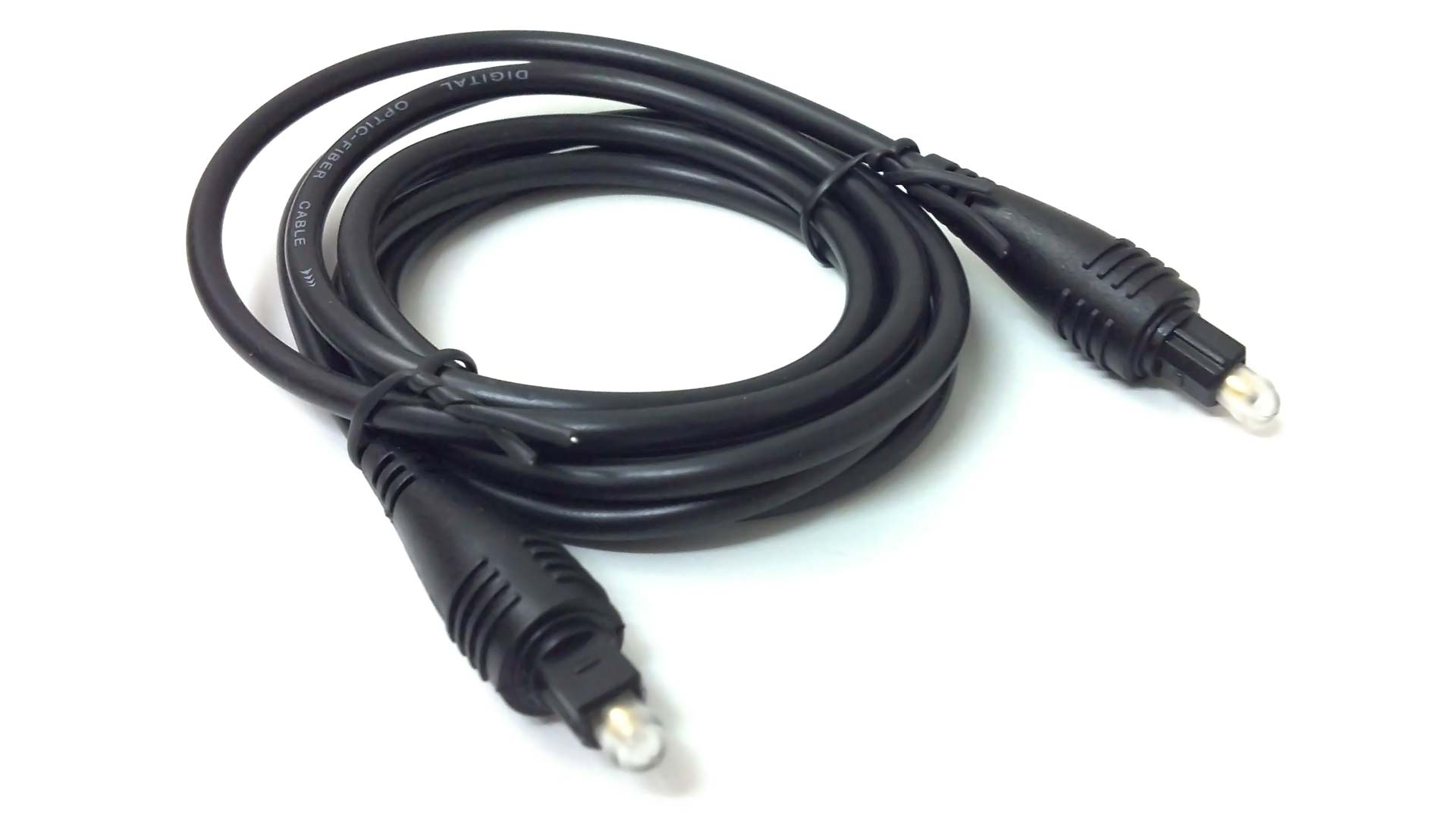
Accessory-2: This is an important component for the speaker. Without the power cable, you will not be able to power the speaker up! The length of this 2-pin power cable measures 1.66 meters.

Accessory-3: Next is the RCA-to-RCA cable coded in red-white and its 1.62 meters in length. This can be used for connecting to your TV system.

Accessory-4: The packaging also provides RCA-to-3.5mm audio jack commonly used to connect your audio devices sources such as smartphone or music player, same length as the RCA-to-RCA (1.62 meters).

Accessory-5: Here is a close up on the R2730DB Remote Control (RC10D1). It’s uses CR2025 3V Lithium Cell Battery. The button control starting from top left to bottom right: Mute, Power On-Off, Volume Decrease, Volume Increase, Auxiliary 1 Input, Auxiliary 2 Input, Optical Input, Coaxial Input, Bluetooth. Based from my testing, this remote can be used on the latest speaker R2000DB too! However, it does not work on the older model R2700 and R2800. The R2700 remote is much larger and uses AA battery instead. There is a thin plastic provided to prevent battery slipped in between the battery and remote to prevent battery consumption.

Accessory-6: L-shaper XLR Speaker Cable connection is used. It has a lock to prevent the cable from accidentally pulled out. I was expecting something similar to the R2000DB (modular XLR cannon cable) but they hardwired to the active speaker. In exchange, the made the power cable modular but the R2000DB has it hardwired. I find it a little strange, perhaps there is some reasoning to this. The cable measures 2.74 meters + 0.06 meters (6 cm) for the length of the L-shape metal.

Speaker Design
Design-1: Alright! Let’s move on to the speaker design. The front of the speakers has a black mesh grill installed. Gives a nice professional minimalistic appearances to it.

Design-2: Here is a close up of the mesh grill both front and rear. It’s made of soft-thin cloth and wood structure. The cloth and wood is glued with brownish glue. Edifier logo is placed on the bottom center of the grill. Noticed that the design is the opposite of R2000DB? The 4 pillar/standoff is now on the mesh grill, so you have to plug them into the 4 mini holes on the speakers.

Design-3: Here are the 3-way speaker tri-amp system. From the top to bottom, we can find a tweeter, mid driver and the woofer. Edifier logo is placed near the top on both speaker. The bass reflex system port is located in the front instead of the rear of the speaker.
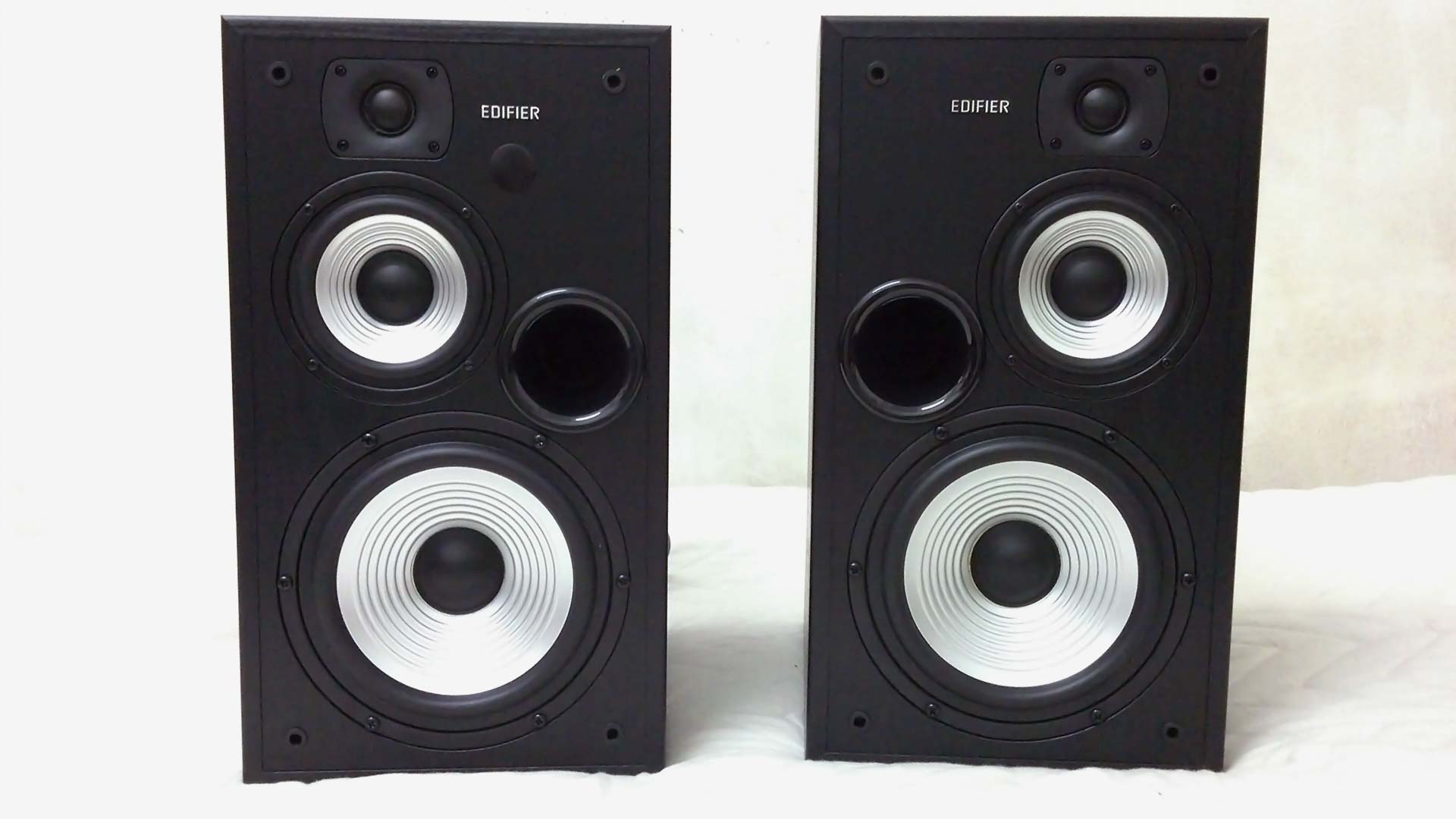
Design-4: The exterior side of the speaker is plain. The texture of the speaker has a wood grain feel to it, similar to wooden furniture. Be careful though, the surface can be scratched with sharp objects.

Design-5: The interior side of the speaker is same as the exterior. Just that the active speaker has the treble, bass and volume controller. The controllers uses potentiometer, more details will be shown in the functionality section!
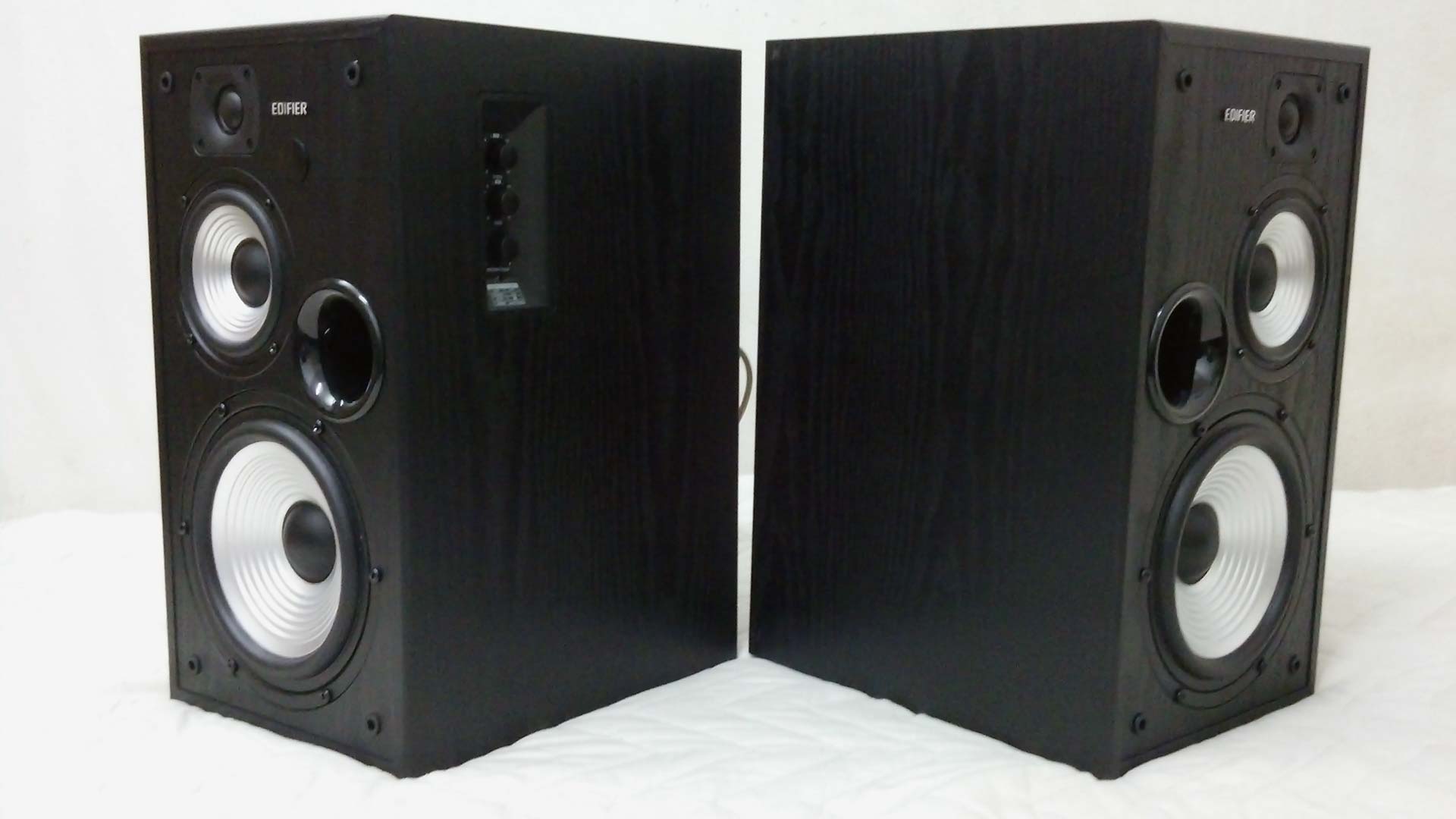
Design-6: Here is a look at the top of the speaker! It is flat, therefore you can put anything on it safely without rolling off. Perhaps a cloth cover when unused to prevent dust from collecting above it.

Design-7: At the rear, we can find the connectivity interface located on the active speaker whereas the passive speaker has the input connection for the XLR L-pin cable.

Design-8: Here is a close up of the rear for the passive speaker. Before and after installing the XLR L-pin cable. To unplug the L-shape cable, remember to press and hold the button to unlock before removing it. Do take note that the L shape can only point downwards, it cannot in other direction such as turning it to the left side to the speaker to get that extra 6 cm length.
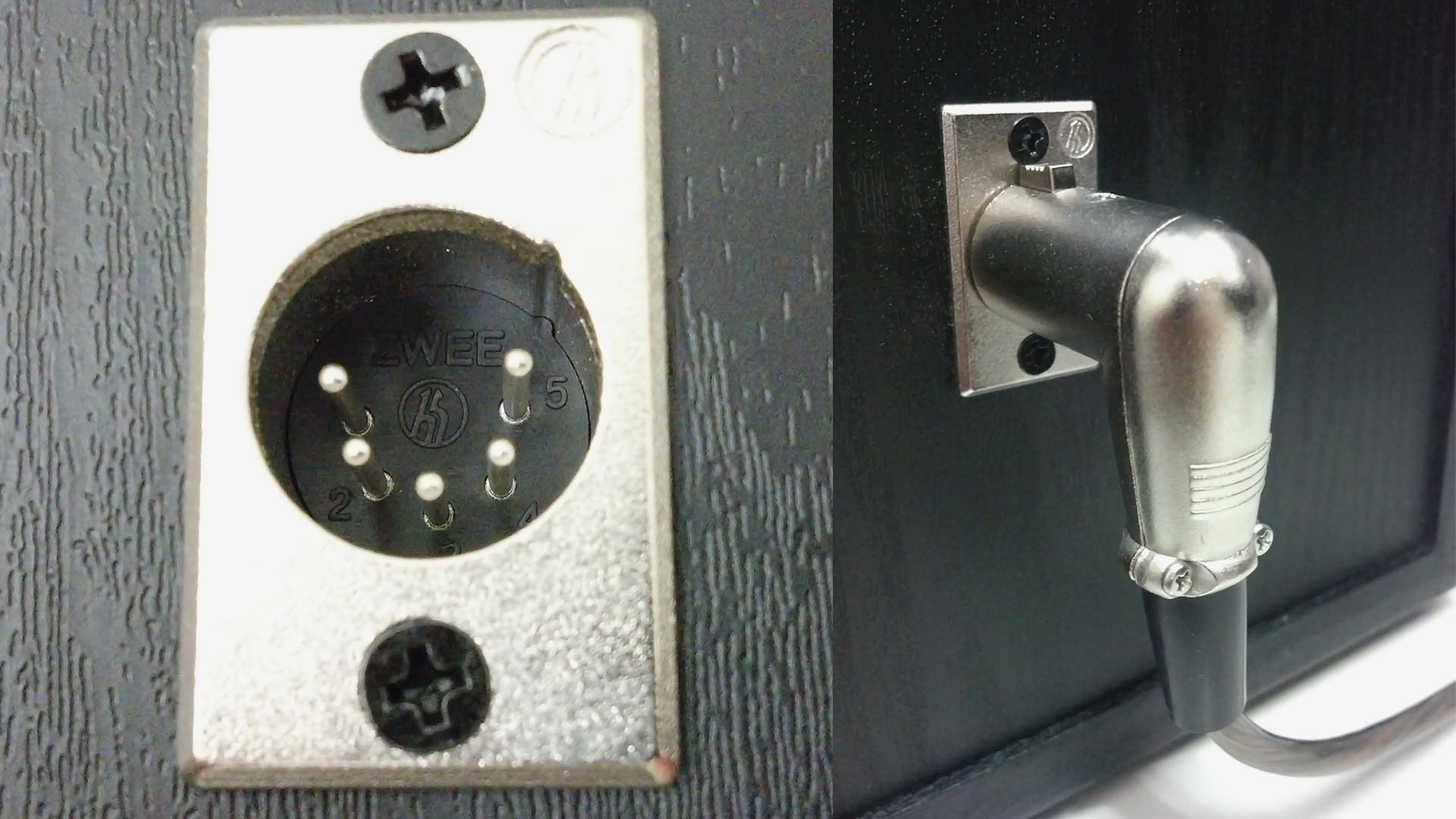
Design-9: Looking at the bottom of the speakers, it has 4 hard rubberized padded feet on each speaker. The blue stickers are the QC (Quality Check) approval from the testers from factory I believe.

A closer inspection reveals the rubberized hard feet is approximately 5mm thick. Note: After using the speaker for several weeks, I noticed these rubberized feet are somewhat easy to be detachable since it uses glue and it occurs on both speakers (active + passive). The temporary solution to fixed the detached rubberized feet is to use super glue and put some weight on it to secure it in place. :shakehead:

Functionality
Function-1: On the active speaker’s right side, there is an interface where user can control the treble, bass, volume and input type. Pressing the volume like a button will switch to different mode (Red = Optical, Orange = Coaxial, Blue = Bluetooth, Green = Line 1/2 input). The volume can be increased up to 50 times (each time increases volume by 2%) When increasing or decreasing volume, the LED light will blink. LED will also blink every second during mute which is a very useful indicator! Treble and bass can be increase/decrease 6 times.

Function-2: The connectivity section, its separated in 2 categories (Analog In, Digital In). Digital In are the Optical and Coaxial (Yellow) whereas the Analog In are the white and red inputs. If you are using Optical like me, remove the black plastic cover from the optical before inserting the fiber optic cable.
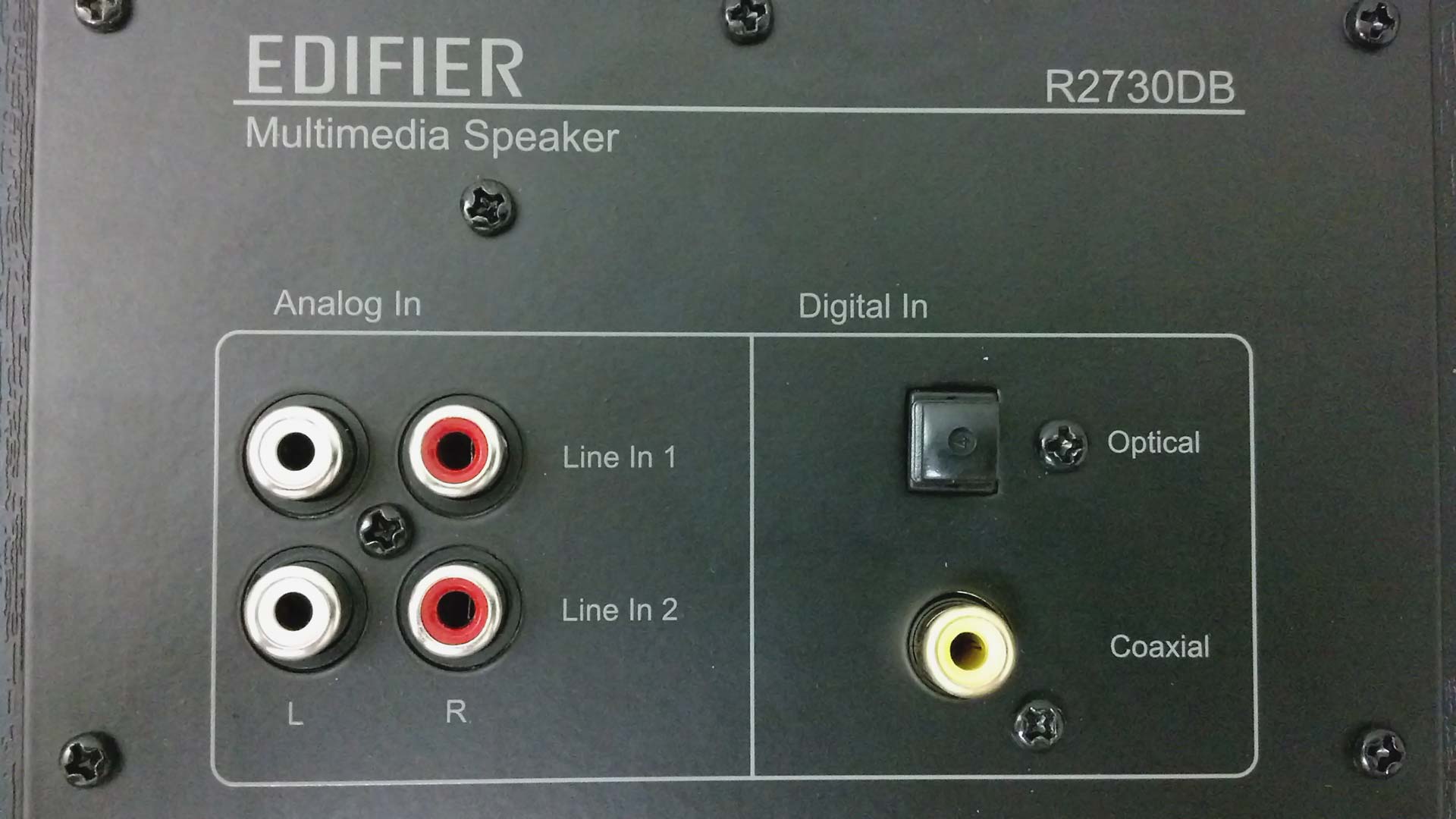
Function-3: Looking below the connectivity section is the subwoofer out (sub out) and left speaker out (the hardwired L-shape XLR cable to be connected to the left speaker). There is a button for on/off, very useful when remote control is out of battery or misplaced. Below the power button is the input for the power cable.

First Impression
At first glance, it physically looks the same as the older model R2700. Black theme and rectangular design. But wait! A closer inspection reveals the subtle changes in its remote control and the interface behind the active speaker. The remote control is now replaced with a smaller version similar to the R2000DB (without the classic/dynamic preset) and the rear of the active speaker now has a subwoofer output!
Discoveries
New Speaker Smell!
When I first turned on the speaker and played it at 50% volume for the first few hours, I noticed there is this funny hot glue rubber smell coming out of my speakers. This smell goes away after 3-5 days with music played for 6-8 hours per day. The smell is similar to burnt glue. Perhaps the subwoofer hot coil is burning off the excess glue around it.
Sub out aka Subwoofer Output
I performed a quick test by connecting it to a 2.0 stereo speaker to the sub out. The result? No sound emitted at all. Moving on to the next equipment is the headphone. Plugging into it also produces the same result as the first. No sound too. Finally, I connected a wireless 2.1 Hi-Fi active speaker to it and bass started to play out of its subwoofer but the satellite speaker is silent as a mouse. When I adjust the bass, the subwoofer plugged to the R2730DB will be synchronize to the changes that I made. Very convenient.
New Test on Subwoofer Output (February 26, 2015):
I noticed that pairing an active subwoofer speaker to the R2730DB via the Sub output produces very low volume bass (approximately 1/5 the bass volume). If it’s done the other way around which is the active dedicated subwoofer is the one that gets the audio source and passes the Left+Right audio channel to the R2730DB speaker and the subwoofer plays the bass is much more louder (louder than R2730DB Sub out by 500%). This makes the Edifier R2730DB sub out not that ideal though. Probably should go with R2700 in the first place to save the extra cash unless users wants the Bluetooth capabilities. :hmm:
Temperature
Running the speakers for few hours with random music genre (techno, trance, K-pop, J-pop, instrumental, rock, etc) generated some heat behind the active speaker. The warmth is similar to a Western Black Caviar 2TB Hard Disk on load at 40 degree Celsius, less warmer than the R2000DB speaker. So have no worries about heat as it will much be cooler compared to a loaded gaming laptop.
No hissing noise on Idle or Mute + No pop on power up/down
As expected from a high-end speaker, there isn’t any hissing/electrostatic noise emitted when the speaker is on idle, mute and standby. When the speaker is power up or power down from the power plug, it does not emit any annoying popping noise like most lower-end speakers.
Speakers Magnetically Shielded
The one thing that annoys me about speaker is that they emit weird blip-blip noise when a SMS/call is received if the phone is placed close to the speaker. This common speaker issue doesn’t occur to the R2730DB as all the drivers are magnetically shielded. Thumbs up! No issues when placing side by side to the monitor with the strong magnets as its not faced directly.
Bluetooth Coverage + Volume
I played a FLAC music via my smartphone using Bluetooth connection to the R2730DB and measured the distance the speaker can receive the signal. The speaker is capable of receiving the audio signal up to 4 meters with direct line-of-sight. I found out that the R2730DB volume cannot be adjusted through the Bluetooth Volume of my smartphone. Other Bluetooth speaker that I used previously such as Logitech, AudioBox and Ellysium is capable of this Bluetooth volume control feature. The strange thing is, when using RCA to 3.5mm (speaker to smartphone), I am able to control the volume using my smartphone instead of the speaker remote control.
New Bluetooth Volume Test (March 7, 2015):
Tested Edifier R2730DB Bluetooth volume again using Android KitKat 4.4.4 MiUI OS (previous test was with Android JellyBean) and found out the Bluetooth volume is not able to control the speaker volume. However, it must be done via the Media volume (the volume that controls music, video games, etc). Pretty strange.
New Bluetooth Volume Test (May 23, 2015):
Tested Edifier R2730DB Bluetooth volume again using a high-end smartphone OnePlus One Cyanogen 11S Android KitKat 4.4.4 and discovered the Bluetooth volume is able to control the speaker volume. Perhaps this issue varies independently on the smartphone OS.
Speaker Volume
If the volume is set below 10 (example: 5), turning off and on via the remote control or behind the active speaker will reset it to volume 10. However, if its set above 10 (example: 35), turning it off and on will not reset it to volume 10. It will memorize that volume setting. This should apply for all input (tested with Line 1 and Bluetooth).
Remote Control Coverage
The remote control is capable of controlling the speaker functionality up to 4 meters too, similar to the Bluetooth signal. The buttons is large and are well-spaced from each other, making it easy to press with large fingers. Many other speaker remote controls that I used tend to make the buttons tightly-knit with one another and makes it too easy to press the incorrect button.
Power Consumption
I used a digital power energy meter to calculate the power consumption of the speakers. My findings revealed the R2730DB consumes 0W on standby (power off) and 9.3~9.5W on idle and mute. The following tests below are done with the speaker volume set at 60% which is sufficiently loud for near-field speaker usage (By default, the speaker is set at 80% volume which is too loud when listening to rock+bass music) The music used for testing is rock bass music (lots of drums, kicks, vocals).
Test-1: With the treble and bass set at -6dB, the power usage hovers approximately 11.2~11.8W. Increasing the treble from -6dB to +6dB does not increase the power usage at all based from my observation on the digital meter.
Test-2: With the treble and bass set at maximum +6dB, 23.6~31.8W and occasionally spikes up to 50W when the low deep bass kicks in. You can feel the some tight pressure in the lungs and the desk is vibrating a lot. The vibration can be avoided if the speaker are placed on a speaker stand separated from the table!
Sound Default Format
What sound default format can these speakers play? I have tested 2 connections using my PC and they are Optical cable (Digital) and RCA-to-3.5mm (Analog). The result “PASS” means there is sound coming out from speaker and “FAIL” means there is no sound emitted. The analog is able to play sound on all format whereas digital can play all except 192KHz (Studio Quality).
Optical (Digital Input)
2 channel, 16 bit, 44100 Hz (CD Quality) = PASS
2 channel, 16 bit, 48000 Hz (DVD Quality) = PASS
2 channel, 16 bit, 96000 Hz (Studio Quality) = PASS
2 channel, 16 bit, 192000 Hz (Studio Quality) = FAIL
2 channel, 24 bit, 44100 Hz (CD Quality) = PASS
2 channel, 24 bit, 48000 Hz (DVD Quality) = PASS
2 channel, 24 bit, 96000 Hz (Studio Quality) = PASS
2 channel, 24 bit, 192000 Hz (Studio Quality) = FAIL
RCA-to-3.5mm (Analog Input)
2 channel, 16 bit, 44100 Hz (CD Quality) = PASS
2 channel, 16 bit, 48000 Hz (DVD Quality) = PASS
2 channel, 16 bit, 96000 Hz (Studio Quality) = PASS
2 channel, 16 bit, 192000 Hz (Studio Quality) = PASS
2 channel, 24 bit, 44100 Hz (CD Quality) = PASS
2 channel, 24 bit, 48000 Hz (DVD Quality) = PASS
2 channel, 24 bit, 96000 Hz (Studio Quality) = PASS
2 channel, 24 bit, 192000 Hz (Studio Quality) = PASS
Sound Quality
When comparing this studio speaker with non-studio speakers that I have auditioned (R2000DB, C2X, Spinnaker E30 and Eclipse E25), I find it very neutral cool sounding. It does not have the sparkly warmth feeling to it. It takes sometime to get used to it. You might be wondering, would it sound better with the treble and bass turned up to the max? In my experience, it does not. This same applies with the R2700 Studio Speaker. However, increasing the volume does overall boost the treble and bass, but the overall sound gets a little loud to bear. At 50% volume is just nice if you are sitting approximately 30 inches away. The R2800 speaker does sound somewhat different when its bass and treble is set above 0dB, feels a little warm to the sound.
Playing music at a high volume (50% to 80% volume) with treble and bass maxed out at 6dB does not distort at all! It’s pretty amazing as cheaper speaker tends to emit pop/crackling noise or doesn’t sound pleasant with ear piercing noise, but the R2730DB treble is very clear and smooth to the ears whereas the bass gets stronger without sounding harsh.
Regarding the treble and bass boost, increasing the treble to +6dB doesn’t sound much different (perhaps 5% change). I wished that the treble can increase a tiny bit more so it feels much clearer for entertainment listening when not in use for audio engineering. The treble sounded confined in the R2730DB. The solution I used to solve that is to install a DFX Audio Enhancer (Free version) to increase the Fidelity, Ambience, Dynamic Boost and Hyperbass. With this enhancement, now it sounds like your regular treble sharp but smooth speakers! The bass is a different story. It gets much stronger at +6dB, vibrates the desk while pushing lots of air. The bass from is solid and punchy but does not provide the deep wide bass from the 2.1 speaker subwoofer. It does react quite quickly to fast beat music, so that is an added advantage of having a smaller woofer. No muddiness detected in the bass, its filled with energetic beats. Regarding the mids, the mids sound thick and rich.
Verdict
For those who are looking to buy this speaker R2730DB or the older model R2700 for music listening and movies/shows, I would recommend other Edifier Speaker series (e.g. Edifier Signature, Edifier Component, Edifier Multimedia with 2.1 speaker setup) unless you are a audio engineer creating music for a living/hobby (e.g. soundtrack for games, opening/ending music for shows, AMV, etc). This speaker is much more suitable purely for listening to music than watching movies/shows or playing games.
I would stress again that is flat neutral sounding with tested with optical cable (treble sounded more recessed) but has a tinge of sharper treble with RCA-to-3.5mm cable (treble sounded a little more airy/openness) Treble lovers or bass lovers may not find it enjoyable as it lacks the sparkly warmth and deep wide bass. However, do take note that the R2730DB has an option for a subwoofer out, so you can connect it to an active subwoofer (powered independently from the R2730DB speaker) to a achieve a deeper wider bass.
Another thing I would like to emphasize is, this speaker will easily allow you to pinpoint whether that song is mixed badly or nice. When testing several songs, it easily helps me determine the music created is lacking bass or it has too much bass, same applies with the treble in the areas it need to shine or it sounded too dull even in neutral balance mode. Finally, if you are listening on this speaker, you can easily tell a good/bad music source (128kbps below or higher) which might tempt you to upgrade your entire music collection to a higher bitrate 192~320kbps MP3/OGG (lossy compression), or FLAC (lossless compression).
Expectations
If there is a 3rd revision to the Studio Speaker lineup (perhaps in 3-5 years time), I wished that the LED is place in the front instead of the side as its easier to see whether the speaker is turned on from the front if you are sitting far away from the speaker. Secondly, is the ability to turn the studio speaker to an entertainment version with higher adjustment to the treble. Currently turning the treble down/up, the changes aren’t significant at all compared to the bass that vibrates much stronger when turned up. Also, would like to see a longer cable for the optical, so I could place the active speaker on the left side where I can see the knobs/potentiometer with LED light as its troublesome to have to stand up and move to the right side to view the controls. Another good feature that I can think of for future enhancement would be going on auto-standby (0 Watt) when no song is played for a period of time.
Disclosure: This review was made using my own Edifier R2730DB, duly purchased at the retail price.
Edifier R2730DB Monitor Speaker Closeup
[youtube url=https://www.youtube.com/watch?v=R0XJ7n0Yq6Q]
Edifier R2730DB Monitor Speaker Audio Sound Test
[youtube url=https://www.youtube.com/watch?v=d8Ed3y2MKFw]
Frequently Asked Questions (FAQ)
Q: How does the Bluetooth sound compares to RCA or digital input?
When connecting the R2730DB to my smartphone using:
1. RCA to 3.5mm jack, the sound quality is a little poor and sound volume is weak.
2. Bluetooth, the sound quality is much better, sound volume is much louder (approximately 40~50% louder)
Note: Probably need a DAC to provide ample juice/power when using the RCA cable. Currently I do not have a DAC to test it out.
When connecting the R2730DB to my computer Z77X-D3H equipped with VIA VT2021 audio codec using:
1. RCA to 3.5mm jack, the sound quality is loud and clear, but the treble sound a little piercing, bass a little bit shallow.
2. Fiber Optic, Optical Cable, the sound quality is loud and clear, treble is smoother and bass is richer + deeper (vibrates more, packs lots of energy)
When comparing Bluetooth against Optical: The result for Bluetooth and Optical connection is same, pure digital audio. If you are thinking of having it placed in the living room to listen to music from your smartphone, grab the R2730DB (bluetooth) instead of R2700 (non-bluetooth), you will thank yourself for the convenience and easy plug-n-play, but more importantly the sound quality you get is so much better than RCA-to-3.5mm cable. The Bluetooth connection to my smartphone device is pretty quick! Switching from non-bluetooth input (e.g. optical) to Bluetooth takes approximately 5 second for my phone to auto-detect it. When comparing other Bluetooth speakers, it will take longer or sometimes connection timeout (have to retry 2-3 time for it to work).
Most Complete!
Thanks!
Hello, I Have Just Purchased The ‘Edifier R2750DB Speakers’ Only To Find ‘Speaker Cable Not Long Enough’, As Have 50″ Television’, Do You ‘Know’ Where I Can Buy ‘Longer Speaker Cable’? So Can Put Each Speaker On Each Side Of ‘Television’
Many Thanks,,
@Lucas: Sorry for the late reply. I did not review the Edifier R2800, therefore I’m unable to give you an opinion on that. However, based from y experience with the R2730DB, it has slightly better mids and bass compared to S1000DB. However, S1000DB is much better in highs aka treble. Much more mellow and it can go further into the very high pitch range that brings the music forward.
@JM: I would recommend you to grab the S2000DB for casual music listening. Studio monitor speakers like the R2700, R2730DB and R2800 has not much high treble pitch. For me, I work on videos and music, therefore I use studio monitor speakers. The one thing I dislike about the S2000DB is the bass is a little too hard. The Studio speaker monitor bass easily beats the R2000DB, richer sound in the mids and bass. If your budget allows, I would highly recommend you to grab the S350DB 2.1 speaker system. It sounds a whole lot better in terms of highs and deep bass. If is not available in your local audio shop, then I would recommend either the Edifier S1000DB (treble is good, but bass is a little fast bounce), S2000PRO (aka S200MKII). If budget is not a concern, go for the high-end Edifier speaker which is the Edifier Air Pulse (it uses ribbon tweeters). The Edifier S350DB speaker system review can be found at http://tech.ayumilove.net/edifier-s350db-speaker-review/
Hi Gene, thank you for you review! Just wondering what do you think if choosing between s2700 and s2000db? the main purpose of these speaker to me is just purely for music listening. Thanks in advance for your opinion and views on this as you had tried all these speakers before.
Edifier R2800 vs S1000DB…Reviews?
Hi Simon, every Edifier Studio Monitor speakers comes with a remote control. If you have lost it, you can contact your local Edifier Distributor to send you a new remote control but you will need to pay for it though.
Hi, I need to get a remote for my Edifier R2730DB speakers but can’t find anywhere. Do you know where I can get one from? Good job you’ve done on the write up. Thanks, Simon.